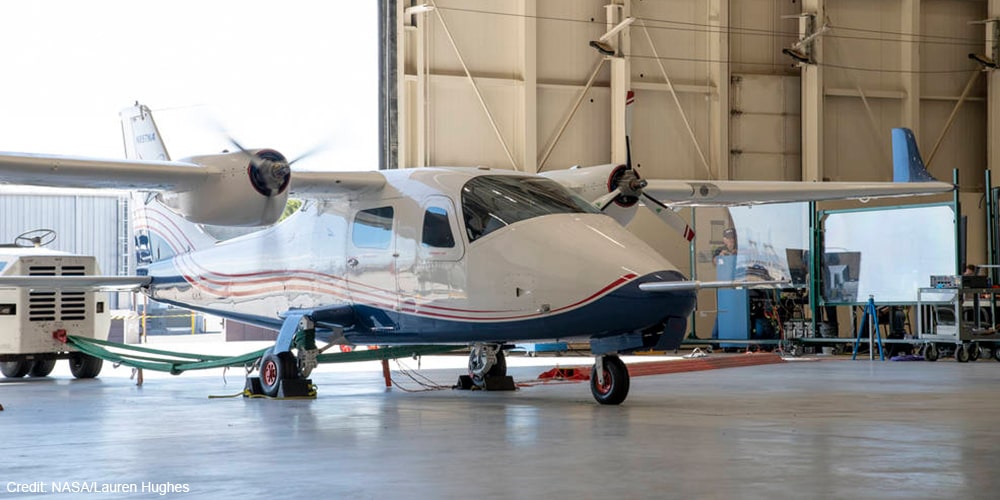NASA discontinues demo electric aircraft without taking flight
NASA provides an update on its electric aircraft X-57 Maxwell. Introduced in 2020, the US space agency expects to complete the project in September 2023. However, the project will conclude without taking off.
Initially scheduled for the end of 2020, the maiden flight was repeatedly delayed due to various challenges, including mechanical issues and the unavailability of critical components. This has led NASA to entirely give up on test flights as it prioritises the project deadline.
“Given the approaching planned end of aircraft operations, the timeline would not allow the team to reach acceptable flight conditions,” NASA wrote in a statement.
Despite the setbacks, the project is considered a success. The objective was not to develop a prototype but a test platform for technologies and design methods, so NASA. “And the team did just that, documenting and publishing the technology gaps and their solutions as they were discovered so that industry stakeholders could take advantage of those lessons as soon as possible.”
As for the X-57 Maxwell, NASA engineers built the aircraft by modifying an Italian Tecnam P2006T to be powered by an electric propulsion system with 14 motors.
Among the early challenges were the batteries, and the team found they would need significant developments in battery technology, NASA said today. The lithium-ion batteries installed on the aircraft warm up as they discharge energy, bearing the risk of overheating. The project worked with Electric Power Systems in Utah to develop a new battery system, which NASA said proved safe.
The design of the cruise motor controllers is another success of the X-57 that has to do with thermal control. The controllers use silicon carbide transistors to deliver 98% efficiency intended for high-power take-off and cruise, meaning they do not generate excessive heat and can be cooled off by the air flowing through the motor. The team designed inverters that meet the challenges and are sharing these designs in technical publications so that the industry can use them as a launchpad for new aircraft products, so the statement.
For NASA, this technology transfer is a common practice. For example, the space agency recently tested cooling technology designed to withstand missions to the Mars and Moon, only this time round, the engineers entertained ideas to use the same technology to cool cables on Earth and charge electric cars at ultra-high speeds.
Back to aviation, NASA intends to continue its research on electric aircraft in other projects. The space agency is still involved in the Electric Powertrain Flight Demonstration (EPFD) project to develop electric aircraft motors in the megawatt class with GE Aviation and MagniX. The aim is to launch zero-emission short-haul and regional flights by 2035.





0 Comments